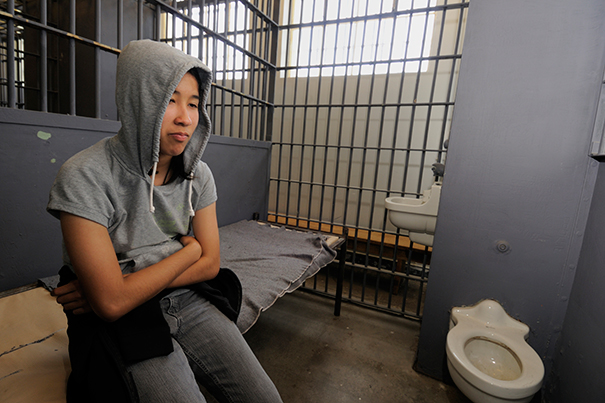
The youth prison model should be replaced with a continuum of community-based programs and, for the few youth who require secure confinement, smaller homelike facilities that prioritize age-appropriate rehabilitation, according to a report released today.
Credit: iStock
Youth justice study finds prison counterproductive
New report documents urgent need to replace youth prisons with rehabilitation-focused alternatives
A new report, published by Harvard Kennedy School’s Program in Criminal Justice Policy and Management (PCJ) and the National Institute of Justice (NIJ), documents ineffectiveness, endemic abuses, and high costs in youth prisons throughout the country. The report systematically reviews recent research in developmental psychology and widespread reports of abuse to conclude that the youth prison model should be replaced with a continuum of community-based programs and, for the few youth who require secure confinement, smaller homelike facilities that prioritize age-appropriate rehabilitation.
The authors, who are leading youth justice researchers and former youth correctional administrators, find that the current youth prison model, which emphasizes confinement and control, often exacerbates youth trauma and inhibits positive growth while failing to address public safety.
Rather, the paper argues, programs work best when youths are in their home communities with rehabilitative programs or in smaller, homelike facilities that promote opportunities for healthy decision-making and development. Corrections agencies should provide a range of options depending on the individual’s needs, from smaller secure facilities to noncustodial programs.
Annual youth imprisonment costs are approximately $150,000 per individual, yet recidivism rates remain close to 70 percent. The report examines the experiences of several states that have pursued alternative models and finds community-based approaches can reduce recidivism, control costs, and promote public safety.
“Youth in trouble need guidance, education, and support, not incarceration in harmful and ineffective youth prisons,” said PCJ Senior Fellow Vincent Schiraldi, a co-author of the report. Previously, Schiraldi directed juvenile corrections in Washington, D.C., and served as commissioner of probation in New York City. “We now know from research and on-the-ground experience that youth prisons are not designed to best promote youth rehabilitation. This report offers concrete alternatives for policymakers across the country to maintain public safety, hold young people accountable, and turn their lives around.”
“Juvenile-justice systems must have the clear purpose of giving each youth the tools he or she needs to get on the right path to a successful adulthood and to reintegrate into the community,” said Patrick McCarthy, president and chief executive officer of the Annie E. Casey Foundation and a co-author of the report. Like Schiraldi, McCarthy is a former director of youth corrections — in his case, in Delaware. “By closing traditional youth prisons and leveraging increased political will to reform our country’s dependence on incarceration, states can use the savings to begin implementing a new, more effective approach to serving young people.”
The report, authored by McCarthy, Schiraldi, and Miriam Shark, a former associate director at the Annie E. Casey Foundation, is one of several emerging from the Executive Session on Community Corrections at the John F. Kennedy School of Government at Harvard University. The Executive Sessions convene individuals of independent standing to take joint responsibility for rethinking and improving society’s responses to an issue.
“The Future of Youth Justice: A Community-Based Alternative to the Youth Prison Model” will be presented today at the U.S. Department of Justice. A panel discussion with leading experts on community-based models for juvenile justice can be viewed via livestream from 10 a.m. to noon (EDT). This event is hosted by the United States Department of Justice, Office of Justice Programs.




